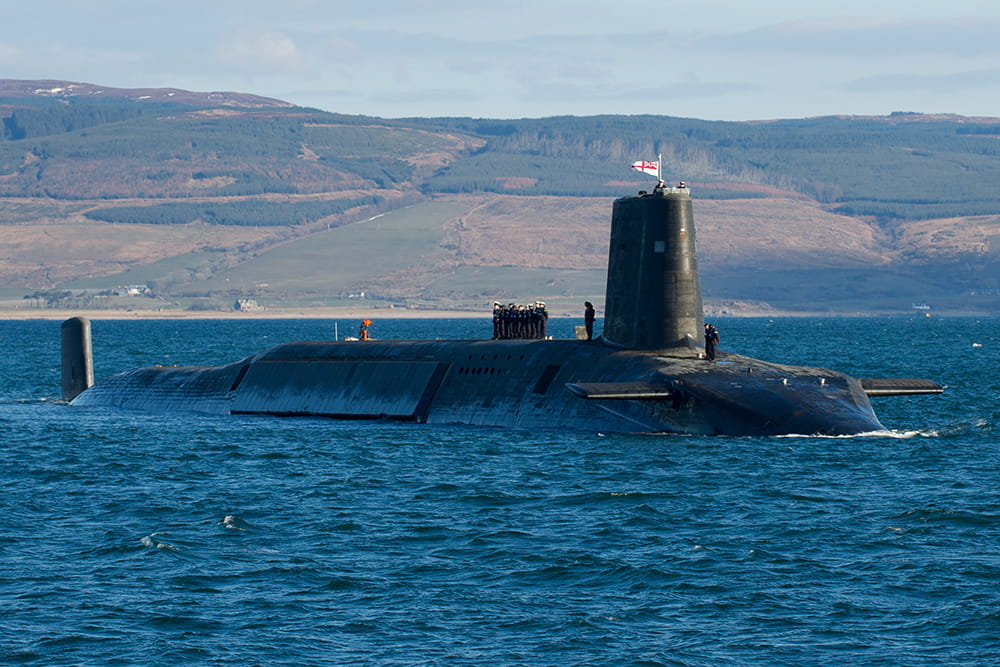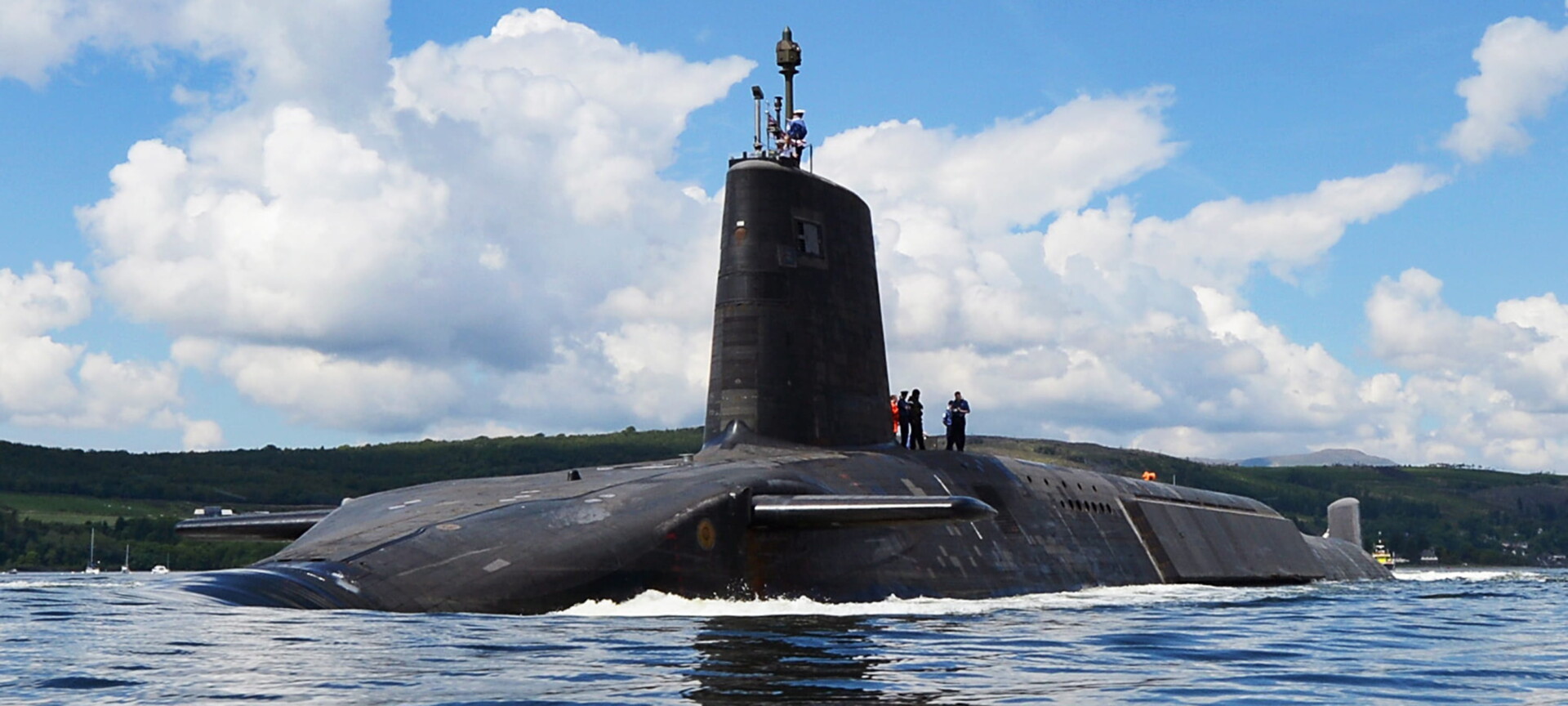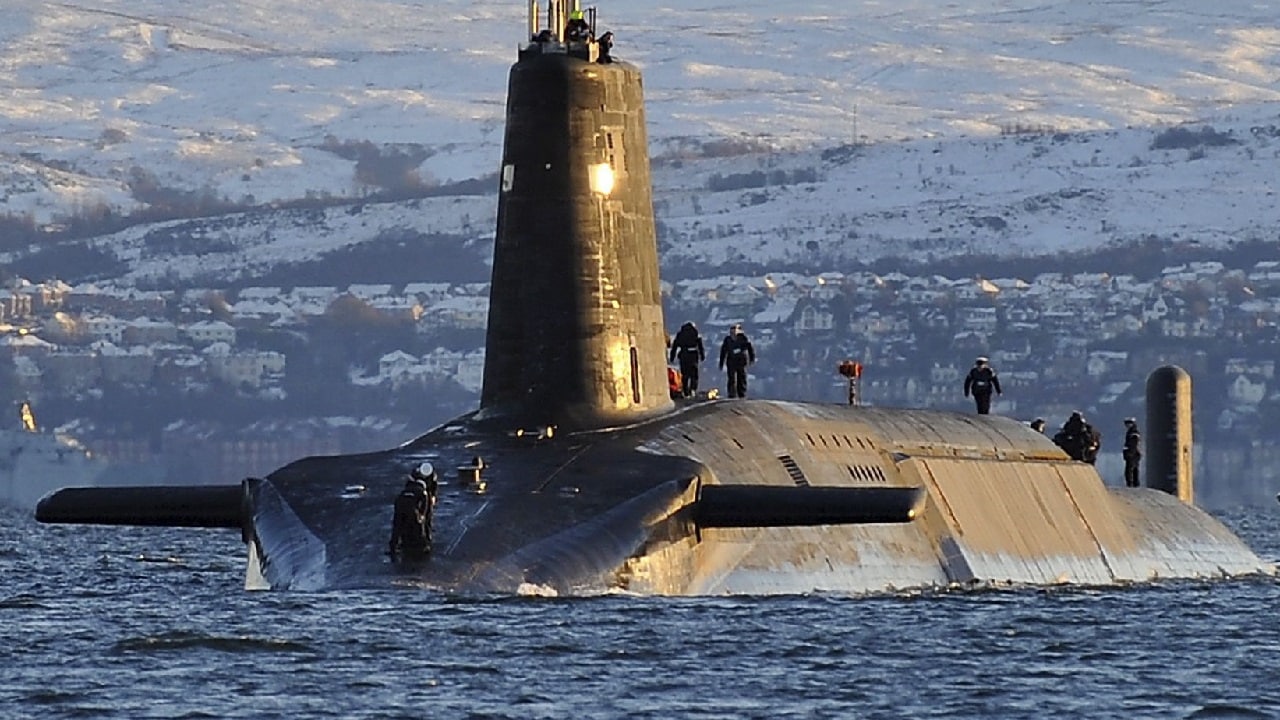WHAT!!! British Nuclear Submarine Commander Dismissed for Filming Sex Act While Steering Submarine
A British Vanguard-class nuclear submarine commander has been dismissed for making a sex video while steering the submarine, which is equipped with Trident-2 intercontinental ballistic missiles (ICBMs).
(DEFENCE SECURITY ASIA) — A British Vanguard-class nuclear submarine commander has been dismissed for making a sex video while steering the submarine, which is equipped with Trident-II intercontinental ballistic missiles (ICBMs).
The commander was immediately removed from his position after senior Royal Navy officers viewed the explicit video.
According to reports from British media, the submarine commander also shared the sex video with a subordinate officer serving on the same Vanguard-class nuclear submarine.
Other submarine crew members, as quoted by the media, alleged that the commander and his subordinate were engaged in an unauthorized relationship, though the Royal Navy did not investigate this aspect of their interactions.
This scandal is another embarrassing incident for the Royal Navy, particularly concerning its Vanguard-class nuclear submarines, as the country struggles to attract personnel for submarine duty.

British newspapers also revealed that the submarine commander in question had passed the rigorous Perisher Course, a prerequisite for commanding a Royal Navy nuclear submarine.
He was among the youngest commanders of a British nuclear submarine.
The sex video scandal involving the British nuclear submarine commander adds to a series of embarrassing incidents plaguing the Royal Navy’s fleet of four Vanguard-class submarines.
Earlier this month, British media reported that engineers working on British nuclear submarines had used software developed in Russia and Belarus, violating Ministry of Defence regulations and exposing the country to severe security threats.
The British media, which broke the story, noted that the software should have been developed by British IT staff with proper authorization, but it was instead “imported” from software developers in Siberia and Minsk, the capital of Belarus.
Concerns have arisen that code written by these Russian and Belarusian developers could be exploited to reveal the locations of British nuclear submarines during operations.
The British Ministry of Defence categorized this as a significant threat to the UK’s national security and launched an investigation.
Last month, a British naval officer serving on a Vanguard-class nuclear submarine was arrested by authorities on suspicion of stealing classified information about the submarine’s movements during operations.

Military police at the British nuclear submarine base in Faslane, Scotland, discovered secret documents related to the submarine on the officer’s mobile phone.
According to sources cited by British media, the sensitive documents found on the naval officer’s phone included information about the movements of the Vanguard-class nuclear submarine during its operations.
In February, a British Vanguard-class nuclear submarine, HMS Vanguard, experienced an “embarrassing” incident when one of its 58-ton Trident II nuclear missiles “fell” into the sea shortly after being launched from the submarine.
This “embarrassing” incident occurred in front of then-British Defence Secretary Grant Shapps and the Royal Navy’s Admiral Ben Key, who were aboard the submarine to witness the nuclear missile launch.
Also on board the submarine were the then-British Defence Procurement Minister James Cartlidge and senior U.S. defense officials.
Britain possesses four Vanguard-class nuclear submarines, which serve as the country’s nuclear deterrent force.
These submarines are equipped with Trident 2 D5 intercontinental ballistic missiles (ICBMs).

The four British Vanguard-class submarines—HMS Vanguard, Vengeance, Victorious, and Vigilant—are based at HMNB Clyde in Faslane, Scotland.
The Vanguard-class submarines, capable of carrying up to 48 Trident missiles, are reported to have a total displacement of 15,900 tons.
These aging submarines are scheduled to be replaced starting in 2030 by four new Dreadnought-class nuclear submarines, which are currently being built by BAE Systems at their shipyard in Barrow-in-Furness. — DSA



Comments are closed.